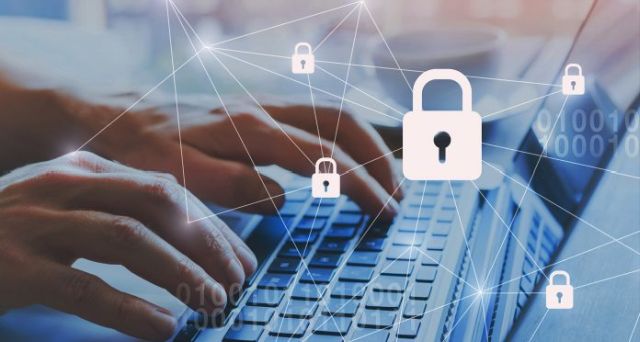
Gmail data scare: 183 million credentials leaked, what enterprises should know


Gmail has found itself in the eye of a cybersecurity storm after a vast trove of 183 million email-password pairs surfaced online. The cache, now listed on the popular breach-notification platform Have I Been Pwned (HIBP), has triggered concern among users and enterprises that rely heavily on Google Workspace for day-to-day communication and collaboration.
The 3.5-terabyte collection, security researchers say, is not the result of a breach of Google’s servers. Instead, it is a compilation of credentials stolen by infostealer malware — malicious programs that quietly siphon login data from infected devices — and aggregated from older data breaches and dark web marketplaces. Such “stealer logs” typically record usernames, emails, and passwords from compromised computers and are widely traded in underground forums.
No direct breach of Google systems
Responding to media reports that framed the incident as a Gmail data breach, Google said the claims were “inaccurate.” The company clarified that there is no evidence of any compromise of Gmail or Google Workspace infrastructure. The exposed data, it said, was likely collected from malware-infected personal computers rather than Google’s servers.

“Reports of a Gmail breach misrepresent what actually happened,” the company said in a statement. “The data in question was not obtained through a compromise of Google systems.”
Cybersecurity researcher Troy Hunt, who runs HIBP, confirmed that the dataset includes 183 million unique credentials after removing duplicates, a large portion of which are Gmail addresses. He noted that 91% of the entries had appeared in earlier breaches, while about 16.4 million were seen for the first time. Hunt added that the information was added to HIBP to allow individuals and administrators to check whether their accounts were affected.
However, not all of the leaked entries are likely to be valid or active. Satnam Narang, Senior Staff Research Engineer at Tenable, said the dataset was “an aggregation of threat data from multiple sources, which included Gmail addresses, but does not indicate that Google itself was breached.” Some records may be outdated, corrupt, or no longer usable, he added.
The password reuse problem

Narang explained that infostealer malware captures login credentials for a range of services — from banking and email to social media — on infected devices. “If a user logs into Gmail, their financial institution, or any online service on a compromised machine, that information gets harvested,” he said.
The real danger, however, lies in password reuse. Many users still employ the same passwords across multiple platforms. Once a password leaks, attackers can use automated “credential stuffing” tools to test those credentials across various websites, hoping to gain access elsewhere.
“Attackers don’t need to breach Google to break into accounts — they simply try previously leaked credentials until one works,” said a senior security analyst at a large Indian IT services firm.
Why enterprises should worry

For companies using Google Workspace, the incident underscores a persistent weak spot in corporate cybersecurity: compromised employee credentials. Even if Google’s infrastructure remains secure, attackers can exploit reused or weak passwords to infiltrate enterprise systems, steal sensitive data, or launch phishing campaigns from trusted accounts.
Security experts advise treating this as a high-severity operational risk. Organisations should immediately check if any company email addresses appear in the leak. “Credential reuse is often the weakest link in corporate defence,” Narang warned. “A single compromised account can be enough for attackers to move laterally across systems.”
Strengthening defences
Experts recommend several steps to contain potential fallout. Enterprises should first determine their exposure by checking HIBP or internal threat intelligence feeds and reset passwords for any impacted users. They should also revoke active OAuth sessions and tokens to close any backdoors.

Next, companies should strengthen authentication protocols by enforcing phishing-resistant multi-factor authentication (MFA) using FIDO2 security keys or passkeys through the Google Admin console. Integrating breach data into security information and event management (SIEM) systems can also help automate alerts and responses to credential exposures.
Since the leaked data likely originated from malware infections, endpoint security must also be reinforced. Businesses should maintain strong endpoint detection and response (EDR) systems, run frequent threat scans, and train employees on password hygiene. Moving toward passwordless authentication through single sign-on (SSO) and passkeys can further reduce risk.
The shared-responsibility reminder
At the user level, experts urge adopting password managers and activating MFA wherever possible. “Even a basic authenticator app or hardware token like a YubiKey can prevent most account takeover attempts,” Narang noted.

For enterprises, the Gmail incident serves as a timely reminder that cloud security is a shared responsibility. While service providers safeguard their infrastructure, endpoint security and user discipline remain crucial.
As identity-driven attacks rise globally, security leaders agree that the answer lies in building an identity-first defence model — one that combines zero trust principles, MFA, continuous monitoring, and employee awareness. The Gmail case may not amount to a direct breach, but it is a clear warning: in today’s digital landscape, passwords alone are no longer enough.
